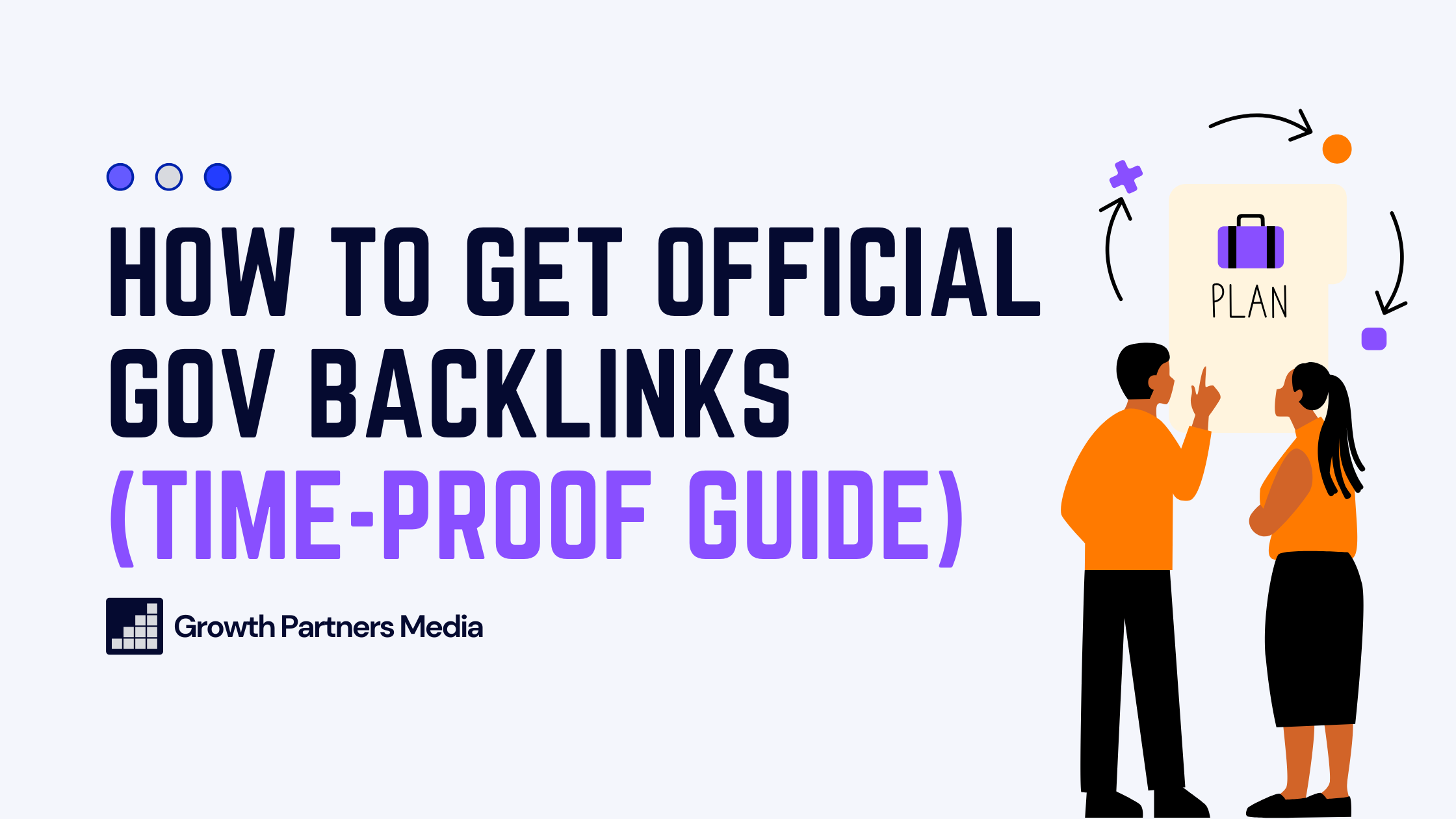Backlinks from .gov domains are SEO gold.
They’re rare, high-authority, and trusted by both algorithms and users, but that power comes with a catch:
They’re almost impossibly hard to earn.
You won’t find pages that accept guest posts, outreach forms, or webmasters eager to trade links. These sites exist to serve the public, not boost your domain rating.
That means if your content doesn’t offer real value — educational, research-based, or community-focused. You’re not getting through the door.
But wanna know a secret?
Gov links ARE attainable.
And in this guide, I’ll show you exactly how to earn them the right way.
Why GOV Backlinks Are So Valuable (and So Rare)

Government backlinks are serious algorithmic trust signals.
Search engines treat .gov domains as ironclad sources because they’re backed by public institutions, secured to military-grade standards, and built for long-term stability.
Unlike backlinks from non-government sites… which can be easily bought or bartered – .gov links are hard-won and algorithmically sacred.
That’s why even a single link from a .gov domain can punch well above its weight.
Most .gov sites:
- Operate under strict publishing oversight — no spam, no fluff
- Have consistent, long-term authority — often decades deep
- Don’t vanish, pivot, or get sold off — your link stays live and valuable
It’s the SEO equivalent of a government-issued ID.
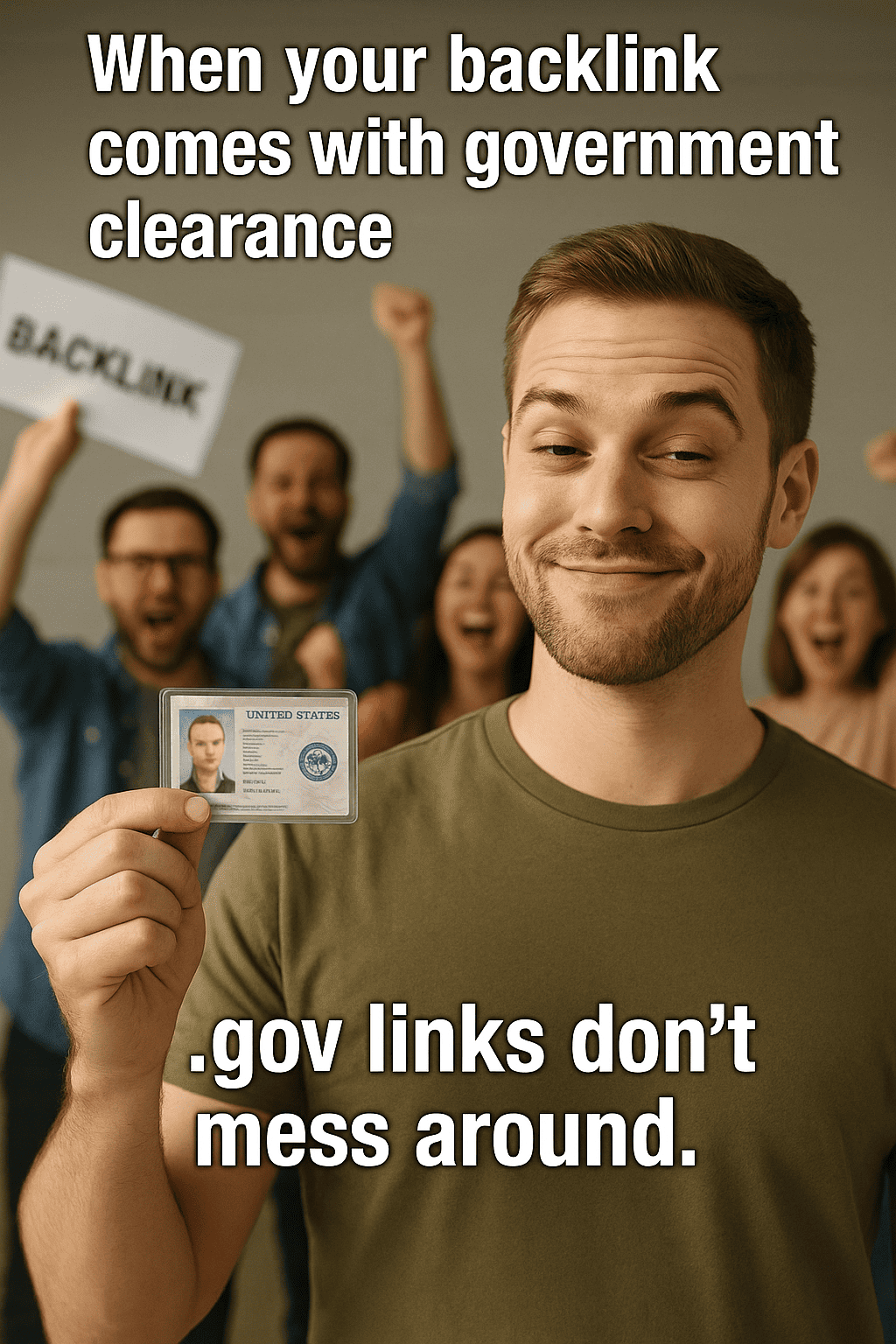
When a .gov domain points to your content, Google reads it as: “This source is credible. This brand is trustworthy. This brand goes straight to number one!”
Okay, definitely not that last part.
But it’s a digital vote of confidence from a source search engines and AI platforms trust more than nearly any other.
The trouble is .gov links aren’t handed out like candy.
- You can’t buy your way in
- You can’t sweet-talk your way in
- And you won’t find “write for us” pages or link exchanges
That’s why most marketers skip them. They don’t play by the usual rules.
If you want to earn a .gov backlink, you need a different approach — one rooted in public value, not private gain.
On federal government websites or local government sites, the only metric that matters is whether your content genuinely helps people. That’s why they’re the holy grail for anyone serious about building links organically; you can’t fake public value.
The Core Principle: Serve the Public Interest
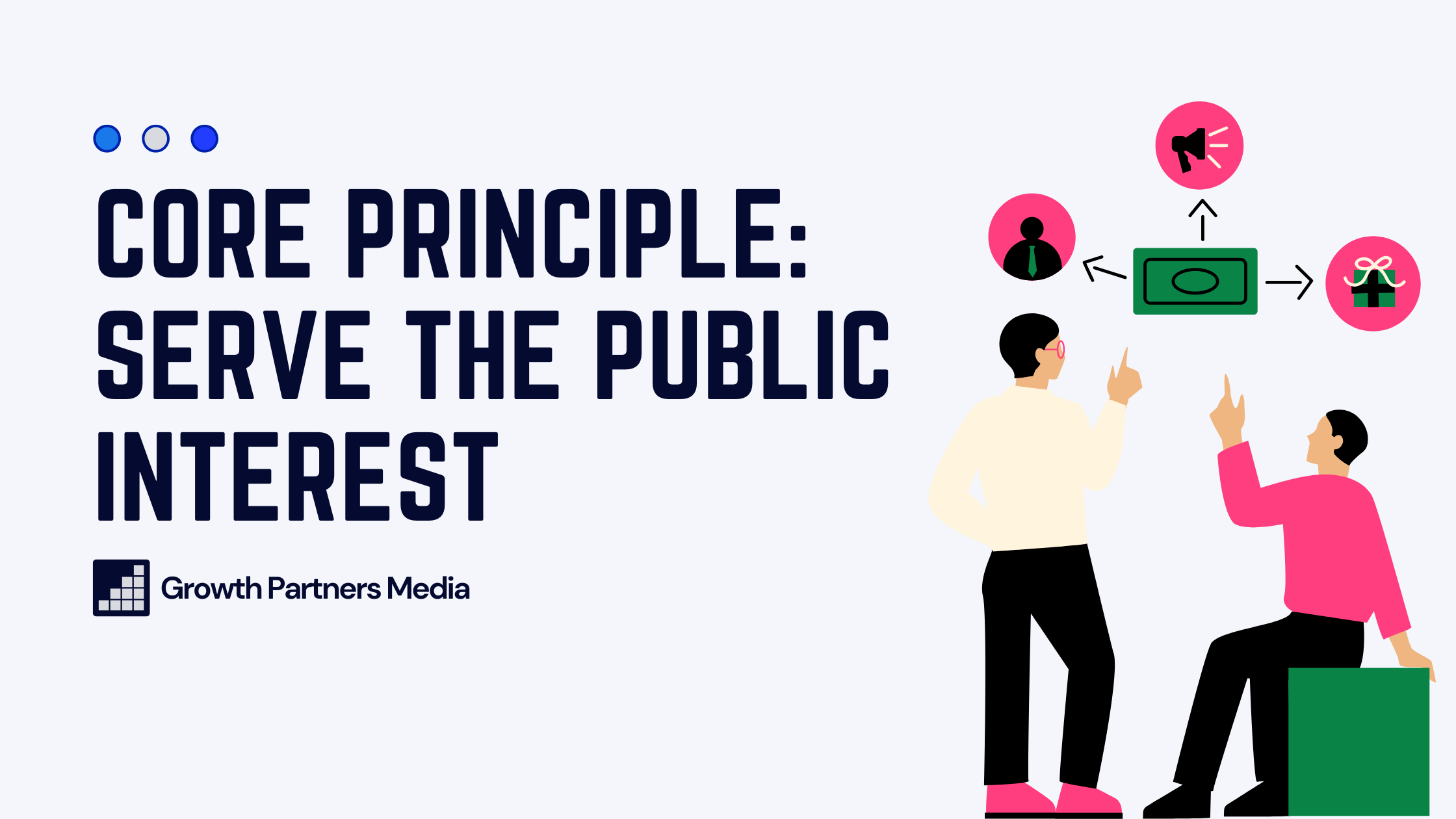
Government websites exist for one reason:
To serve the public good.
They’re not in the business of giving out backlinks to boost your SEO.
Gov sites typically only link to external content when it directly advances their public mission — anything salesy, self-serving, or vague rarely makes the cut.
It’s a pretty high bar.
Here’s what consistently clears it:
✅ Content that simplifies government processes
Think: a step-by-step guide on applying for small business grants — not generic marketing advice.
✅ Tools and templates that expand access
Job readiness kits, digital literacy resources, mental health checklists. Anything that closes a gap for underserved communities.
✅ Data-driven information with zero spin
Government entities cite sources that are factual, current, and free from sales fluff.
✅ Evergreen resources that are easy to share
PDFs that break on mobile? Dead on arrival. Clean HTML guides with alt text and citations? Much more likely to land.
The key here is about finding a real-world use case that aligns with public service goals, then building helpful content around it.
For example:
- A productivity app can publish ADA-compliant résumé templates and get listed by workforce boards under job-seeker resources.
- A web agency can release an accessibility checklist and earn citations from local libraries upgrading their tech.
- A fintech startup can create budgeting guides tailored to low-income households and get featured by city economic-development offices.
The rule here is simple:
Lead with value. The kind of value that makes a public agency’s job easier or directly benefits the citizens it serves.
That’s the foundation for every tactic in the rest of this guide.
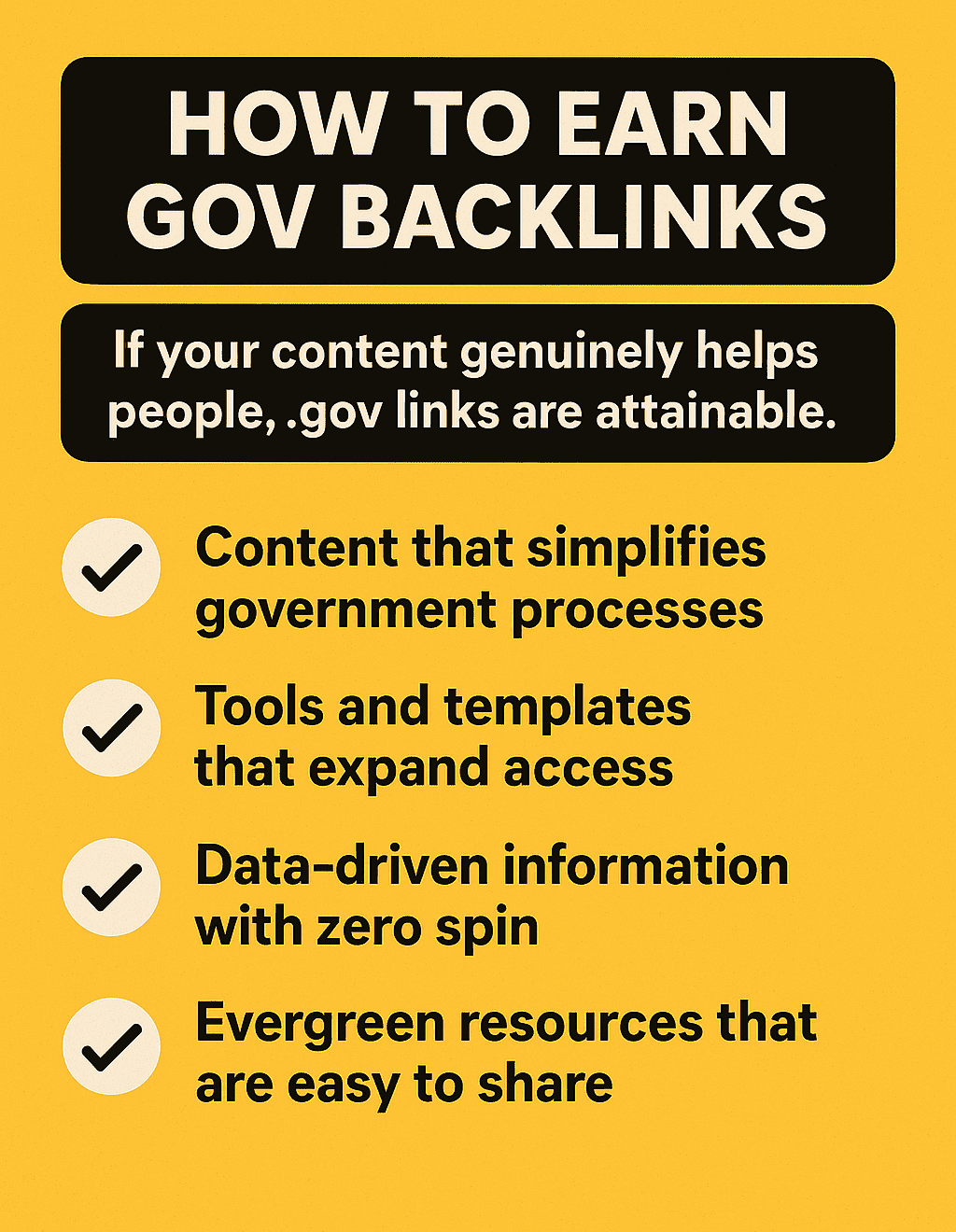
Strategy 1: Create government-relevant resources
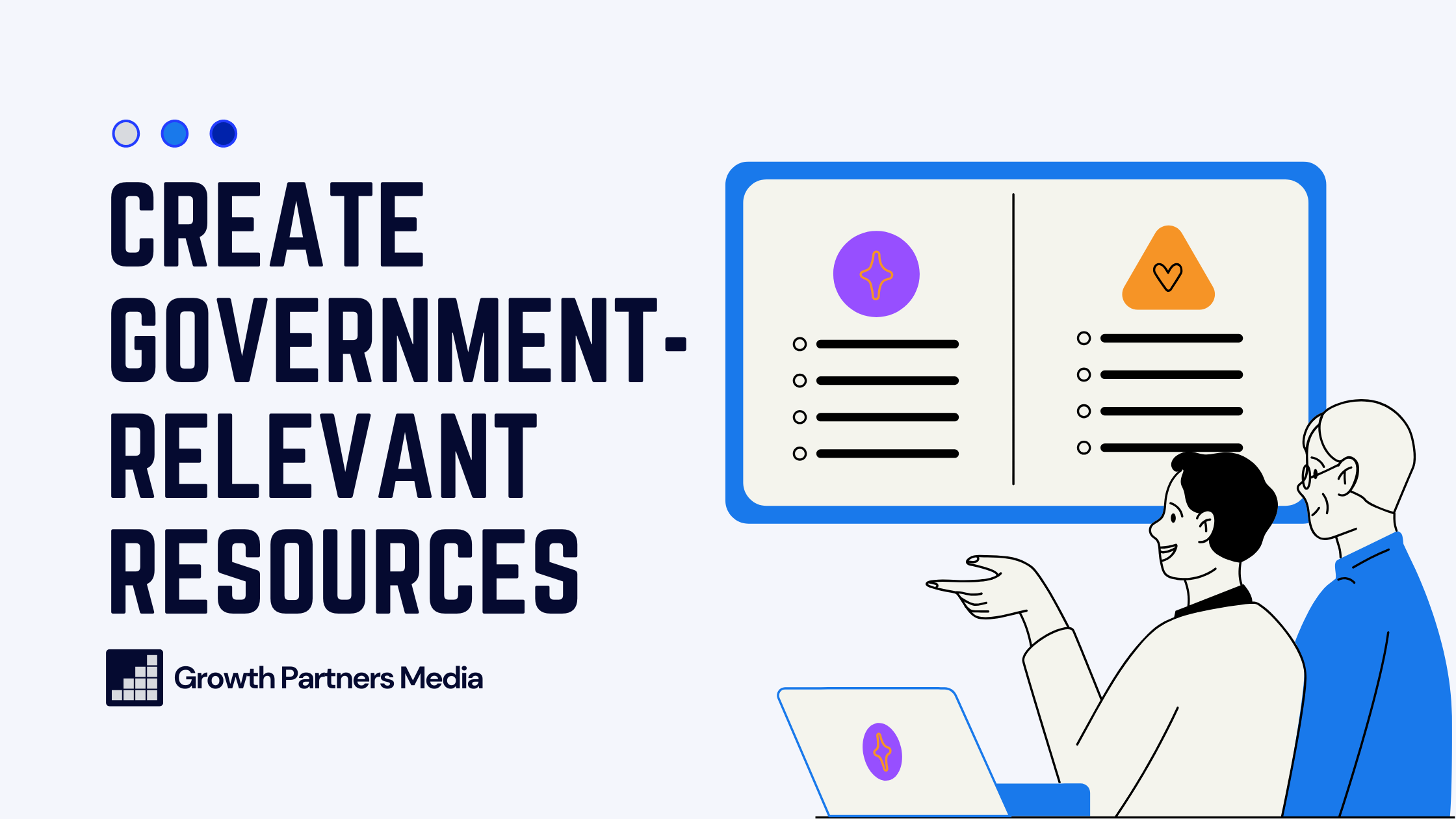
The most reliable way to earn .gov backlinks?
Build something a government site actually needs.
From the CDC to local city councils, most government websites maintain resource pages linking to external content that serves the public. Whether it’s about health, safety, job skills, or digital literacy.
Your job is to reverse-engineer what they already link to and create something better.
What gets linked?
- Mental health screeners and wellness guides
- Disaster prep checklists
- Job-readiness and small business tools
- Financial literacy templates
- Digital safety resources for underserved communities
These are practical, high-trust resources that hit the sweet spot between public utility and strategic search engine optimization.
That’s why this kind of relationship-first link building still delivers. You earn the link because you’ve earned the trust.
Consider Easterseals’ free developmental screening tool parents can fill out online. The CDC’s “Act Early” portal links straight to it, giving Easterseals a pristine .gov citation because the questionnaire helps the CDC promote early-childhood milestones:
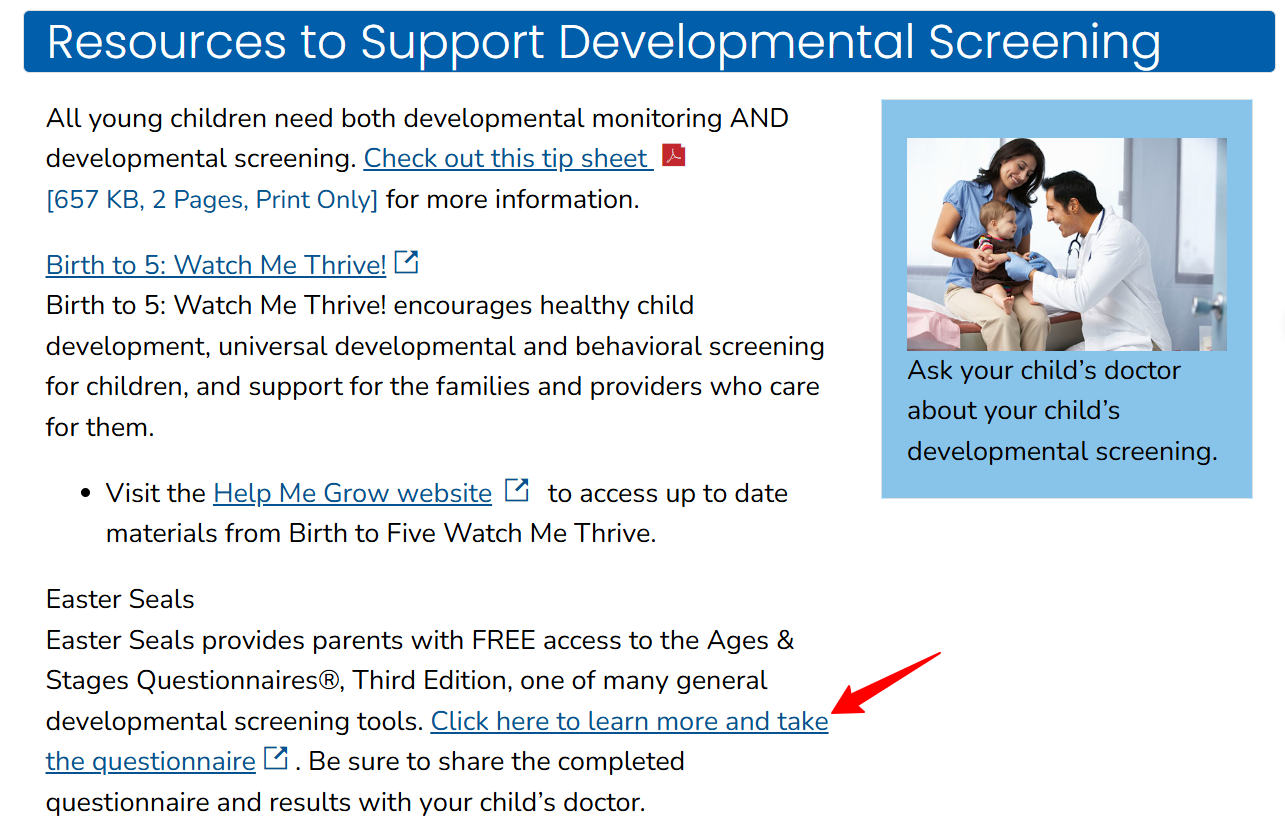
For most B2B firms, this is textbook inbound marketing.
You don’t need to be a nonprofit to pull this off.
A SaaS HR brand could publish an ADA-compliant mock interview simulator. A fintech app could offer a budgeting workbook tailored to local community banks. If it supports a gov mission, it can earn a gov backlink.
Here’s how to identify content gaps on gov sites:
Use advanced Google search operators like:
site:.gov intitle:”resources” + [your niche]
site:.gov inurl:”links” + [related keyword]
This reveals hubs, directories, and the occasional government resource page looking for quality third-party content to reference.
Study what they feature and where your content can fill the gap.
Even better: fix broken links on .gov resource pages with content that’s more useful, current, and relevant.
I created this quick video to show you how I found thousands of broken link opportunities on the CDC domain alone through the Ahrefs SEO tool:
Finding Broken Link Opportunities on cdc.gov – Watch
Strategy 2: Partner with government programs or grants

One of the smartest ways to earn .gov backlinks?
Become part of the story.
Federal, state, and local government agencies regularly partner with outside organizations, especially those offering tools, services, or expertise that align with public initiatives. These partnerships often get featured on official websites, complete with a backlink.
You don’t need a $1M grant to make it happen. It could be as simple as:
- Co-hosting a skills training webinar with a state workforce board
- Supplying tech for a local broadband or accessibility pilot
- Contributing a public health or cybersecurity resource to a municipal toolkit
Case in point:
The City of Austin’s Office partnered with tech provider Deaf Link to launch the Accessible Hazard Alert System (AHAS):

The city promoted the initiative through an official alert page, which mentioned Deaf Link and linked to their YouTube tutorial video explaining how to use the system.
That’s proof you don’t need deep pockets—just the right partnership angle, to snag some of the safest backlinks for your business.
To find these kinds of openings:
- Monitor your city and state government sites for partnership opportunities
- Explore relevant initiatives in areas like:
- Workforce development
- Broadband and digital inclusion
- Sustainability and clean energy
- Public health awareness
You can also search federal sites like Grants.gov or SBA.gov for active programs and look at past participants to see who’s landed backlinks before.
Show up, contribute something meaningful, and your name (and link) can end up on the next official.gov page.
Strategy 3: Contribute to local outreach campaigns (no partnership required)
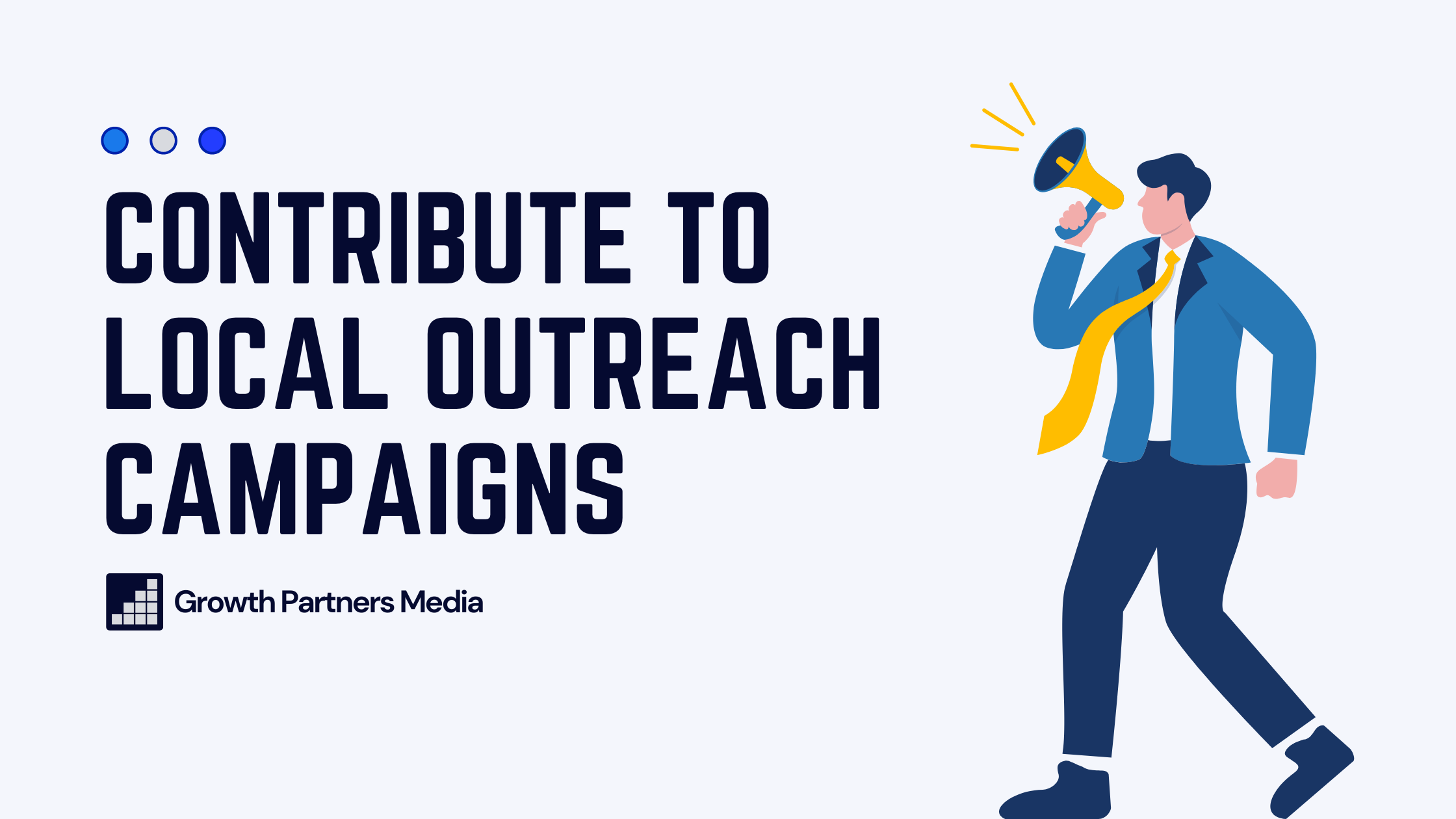
You don’t need a government grant or co-branded campaign to earn a .gov link.
Local agencies often run public awareness efforts tied to seasonal events. Think cybersecurity month, disaster prep season, mental health awareness, and workforce training drives. These local agencies regularly link out to helpful third-party resources that reinforce their message.
Local government websites like city IT departments, regional workforce boards, or public health departments are especially active in these efforts. Their digital content often needs reliable, ready-to-share resources, making them an ideal target for high authority link opportunities.
If your company creates useful, timely, and community-relevant content, you can earn citations simply by being a helpful voice.
Let’s say you publish a free cybersecurity checklist designed for small businesses:
A city IT department running a digital safety week might link to it from their government blog, alert page, or community bulletin.
Or maybe you’ve built a guide to remote work tools for rural businesses. A regional economic development site, or other relevant government sites, might feature it in their resource roundup.
This approach works best when your content is:
- Timely — aligned with seasonal campaigns or public notices
- Localized — relevant to the agency’s jurisdiction or target audience
- Practical — plug-and-play resources they can share without edits
- Credible — free of sales pitches, clearly branded, and well-cited
To uncover opportunities, monitor:
- City or county “News” and “Events” pages
- Community outreach calendars
- Digital literacy and public education initiatives
- Emergency preparedness campaigns
- Small business or workforce development bulletins
Then create something that complements their efforts and pitch it as a free, ready-to-use resource. If it saves staff time and serves their mission, you’ve got a strong shot at a gov link.
Remember, if it doesn’t serve the public, you’re not getting in!
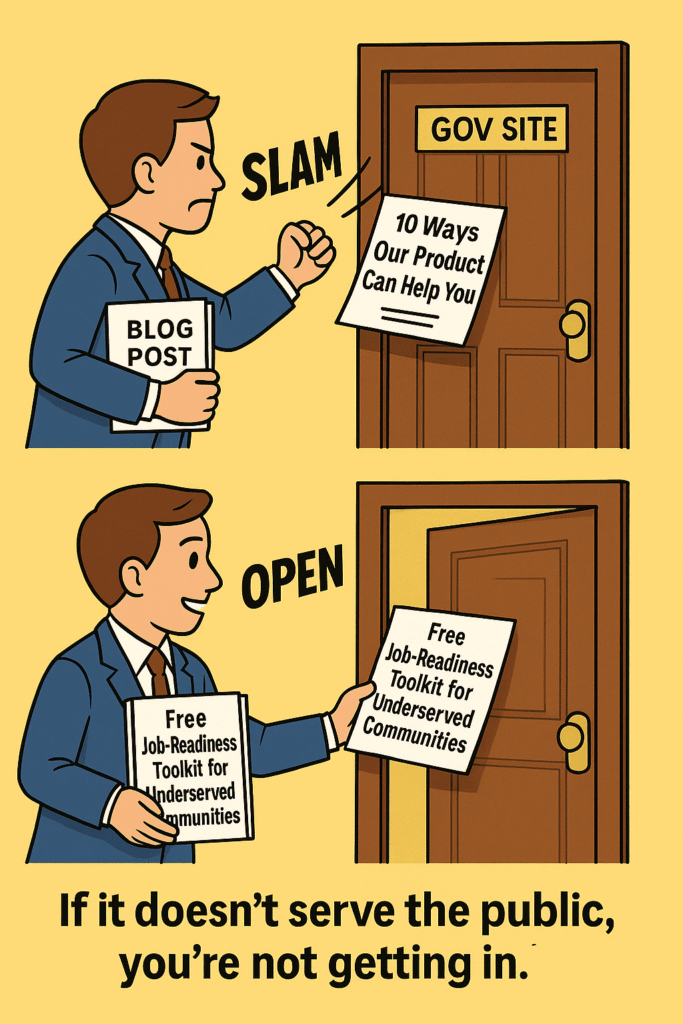
Bonus: These local gov sites are often linked to by schools, libraries, and regional media outlets. Creating knock-on trust signals that compound your visibility beyond the original backlink.
Strategy 4: Secure local GOV links through business registrations
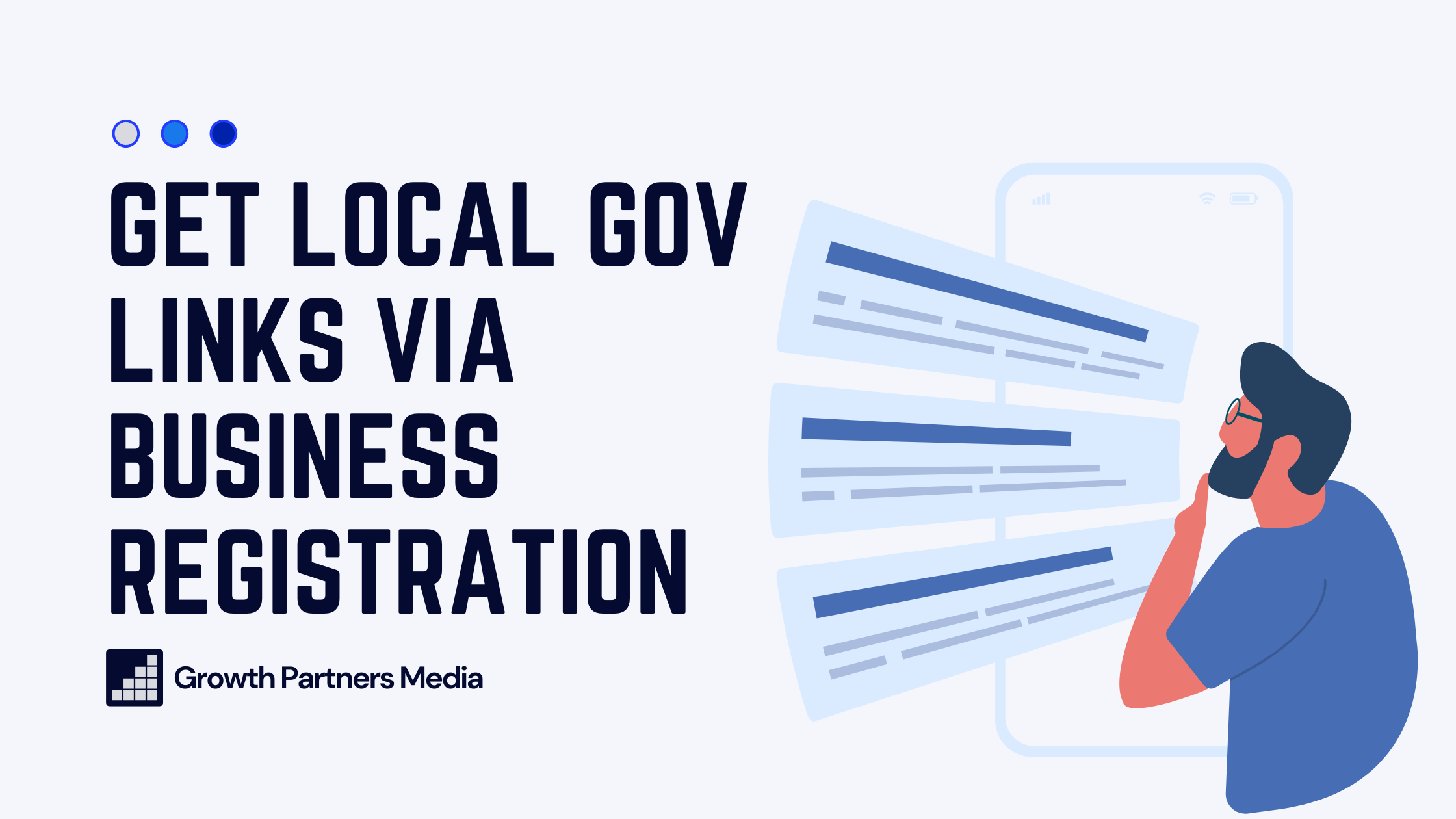
You don’t need a viral campaign or a co-branded toolkit to earn .gov links. Sometimes the best move is hiding in plain sight:
Getting listed in government directories you already qualify for.
Public agencies at the city, state, and federal levels maintain directories of:
- Approved vendors
- Certified contractors
- Licensed professionals
- Workforce training providers
These lists aren’t built for SEO; they’re built for public trust. But they often include clickable URLs, handing out clean, context-rich backlinks from high-authority .gov domains.
For example:
This is the Building Operations & Maintenance Training Providers directory from NYSERDA (New York State Energy Research and Development Authority). Each listed provider gets a gov-backed citation:
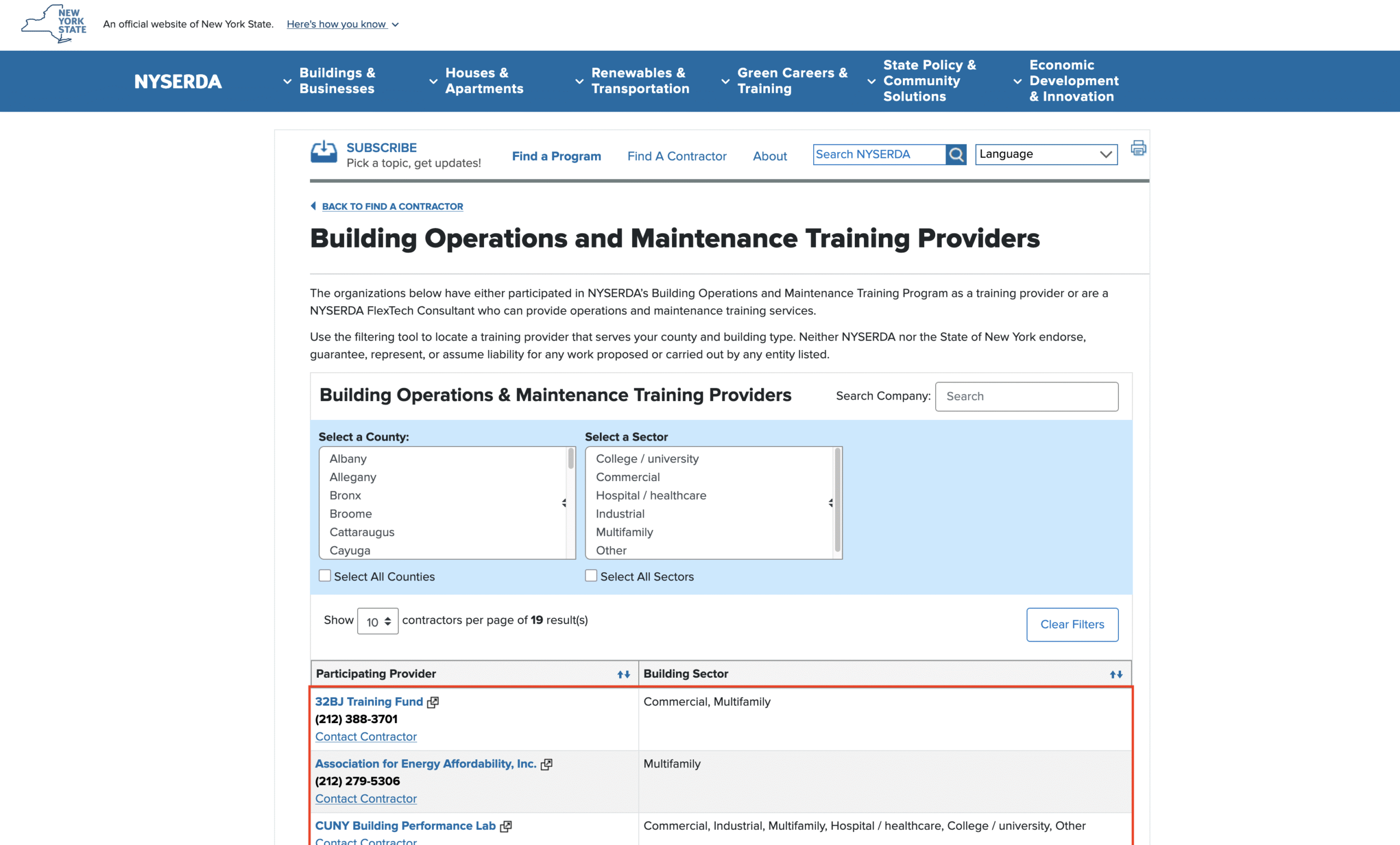
This domain is a DR91 powerhouse .gov website. A backlink from here is likely worth hundreds of standard links.
If your company provides relevant services or has participated in a government program, you may already be eligible to appear in directories like this. All you need to do is apply, register, or ensure your listing includes your website.
Here’s how to surface opportunities:
- Use Google search operators like:
- site:.gov “business directory” + [your city]
- site:.gov “approved vendors” + [your industry]
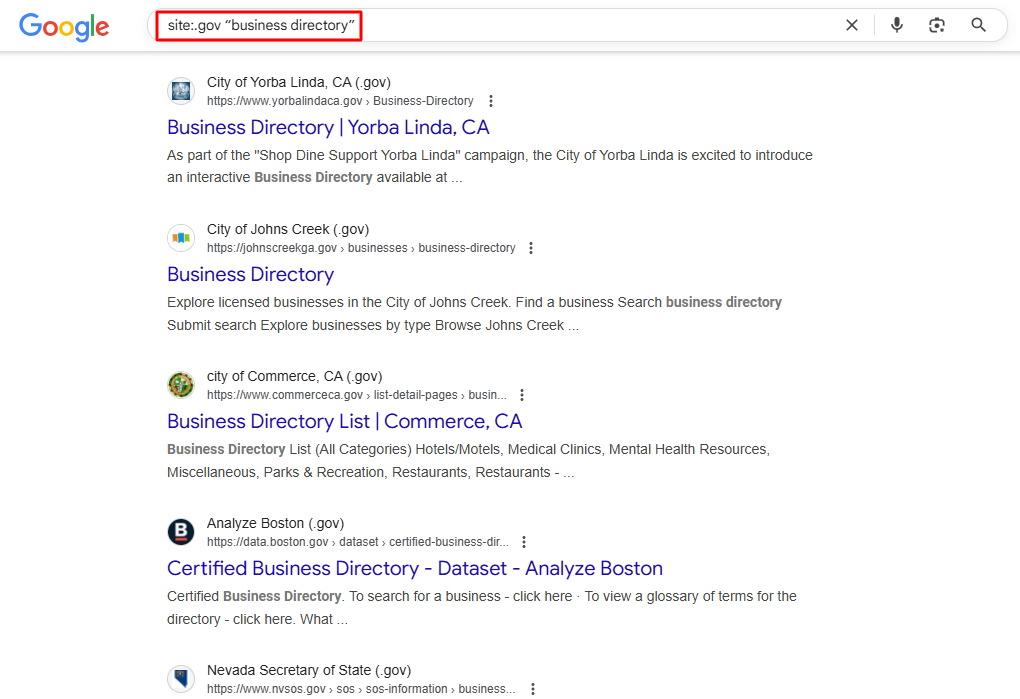
Not every listing includes a hyperlink, but that doesn’t mean it’s worthless.
Branded mentions (your name, domain, or product referenced in plain text) play a major role in AI-powered search. Tools like Perplexity, Claude and ChatGPT use those mentions to understand who you are, increasing your chances of being surfaced in relevant answers, even without a clickable link.
Strategy 5: Contribute to public reports, surveys, or data sets
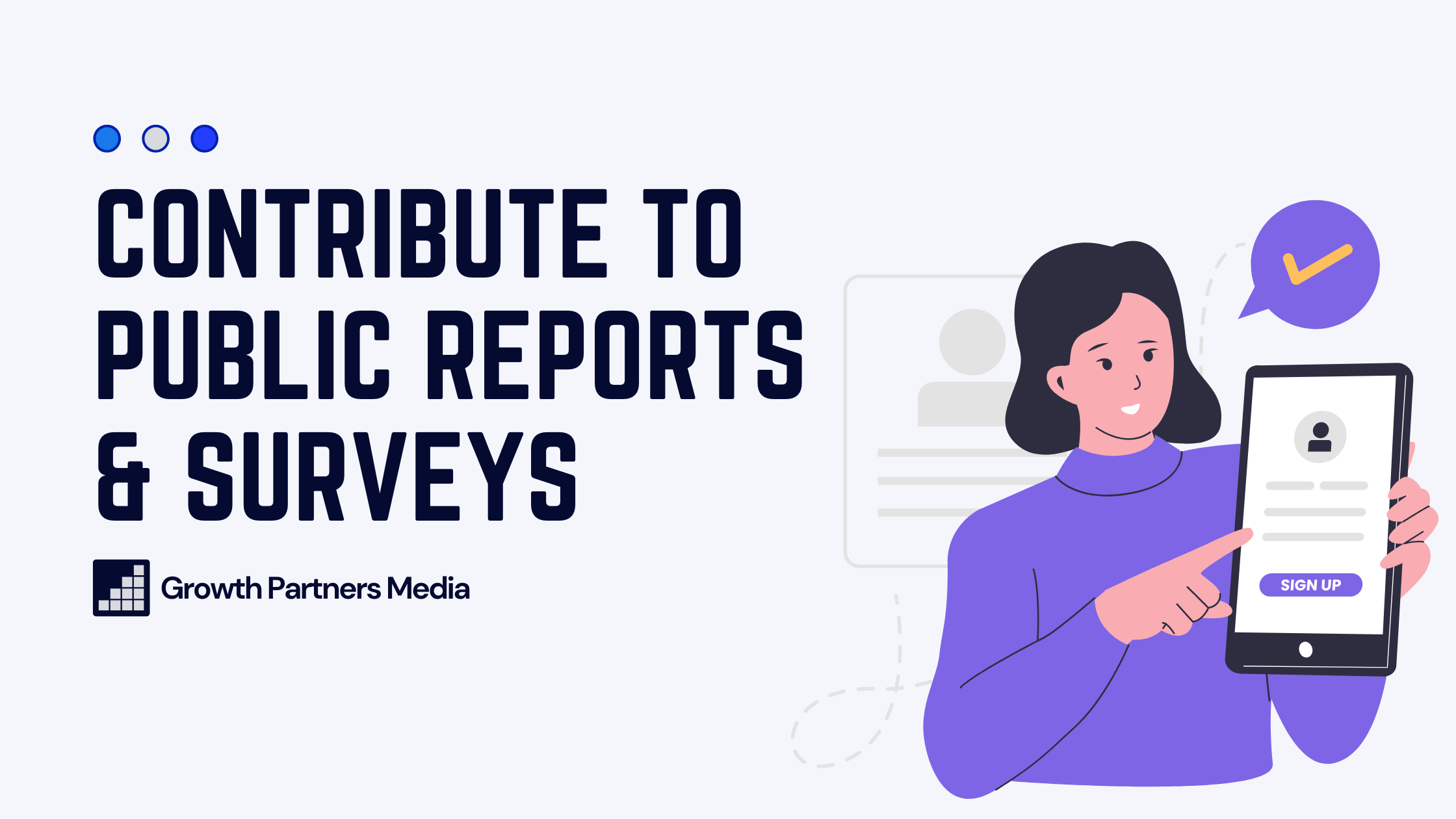
If there’s one thing .gov sites love linking to, it’s credible data. They thrive on objectivity, transparency, and sources they can confidently reference in public-facing documents.
That’s your in.
Government bodies regularly publish reports, grant proposals, strategic plans, and public-facing educational content.
These documents often cite third-party data, whitepapers, or research studies, especially if it fills a knowledge gap they don’t have the budget or expertise to cover internally.
The more useful, objective, and transparent your research is, the more it qualifies as link-worthy content from a government perspective.
This works especially well in sectors that overlap with government priorities:
Healthcare, education, cybersecurity, public infrastructure, sustainability, or small business development.
These are the fields where government agencies are actively looking for supporting data to inform decisions or justify action.
For example, the Connecticut State website links directly to a study by Eichelberger et al., published in a peer-reviewed journal.

The study was included because it aligned with the content of the government page. It added research-backed support to an existing safety campaign. That relevance is what made it link-worthy.
Another example is McKinsey’s $300 billion open-health-data figure highlighted on resources.data.gov to justify federal open-data initiatives.

This is how you can turn strategic research into SEO wins:
|
Move |
Why It Works |
Pro Tips |
|
Spot the data gap |
Government teams love fresh, credible numbers but hate budget battles to gather them. If you supply what’s missing, they’ll cite you. |
Scan open-data hubs like Data.gov to see where stats are stale or absent. |
|
Run a rock-solid study |
Rigorous methodology + transparent sampling = instant legitimacy. Think workforce surveys, sector-specific benchmarks, or regional trend reports. |
Follow open-data licensing so agencies can reuse without red-tape headaches. |
|
Package for policymakers |
Civil servants don’t have time to reformat your PDFs. Provide CSVs, interactive charts, and an executive-summary HTML page that’s easy to deep-link. |
Include boiler-plate citation snippets (“Source: YourBrand 2025 Digital Adoption Index”) to make linking effortless. |
|
Pitch the right desks |
Target analysts and government agency officials in departments that publish annual reports or maintain resource libraries—economic development, digital transformation, public health, etc. |
Find agency authors via previous whitepapers and connect on LinkedIn before the cold email lands. You can also identify these contacts by interviewing government officials for insights about the types of resources they rely on or gaps they see in public information. |
|
Land in official repositories |
Many departments host third-party data in “external resources” or “open data partner” sections. Once listed, the .gov backlink is effectively permanent. | Submit through formal portals (e.g., Data.gov’s dataset suggestion form) and track status politely, not pushily. |
Of course, not every business can pull off an original dataset. Research takes time.
And if your niche doesn’t intersect with public affairs or government initiatives, you may be better off with a different approach.
The Hardest Links Are the Most Valuable
Gov link building isn’t just an SEO flex—it’s a long game.
One rooted in authority, alignment, and value that can’t be gamed. Government websites don’t link out to boost your SEO. They link out to help their audience.
When other websites chase volume, gov backlinks stand out for quality.
Let’s recap what works:
- Build resources that fill a public need or strengthen existing initiatives
- Show up in business directories, procurement lists, and licensing databases
- Collaborate with public agencies through programs, grants, or co-branded outreach
- Contribute research or insights that reinforce official guidance
- Spot outdated links—and offer better, more useful replacements
Getting .gov backlinks can be a way to truly gain a unique advantage in search against your competition. Furthermore, it’s harder to reverse-engineer than most other backlink earning strategies.
At Growth Partners Media, we specialize in building authority the hard way, the right way. If you’re serious about earning the links that others can’t (or won’t) pursue, let’s talk.
We’ll show you how to turn strategy, credibility, and consistency into .gov-grade authority.
- How to Outsource Backlink Building Without Stress [2025] - October 7, 2025
- Top 3 SEO Outreach Services That Actually Work [2025] - October 7, 2025
- 9 White-Hat Link Building Techniques For AI & Google (2025) - September 23, 2025

